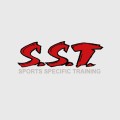At SST Burlington we have recently had the opportunity to partner with BOMBA Baseball in Burlington Ontario. This is awesome and exciting news since providing an awesome structured training environment is what we do best. I am excited at the opportunity to work with many new athletes from the BOMBA programs. This got me thinking about baseball specific strength and conditioning programs and some of the current problems they are faced with. With this in mind I would like to present 4 areas I think successful baseball strength and conditioning programs should pay special attention.
4. Fun
It goes without saying to me that for the youth athlete the program they are participating needs to be fun. This can be created through the program itself, through the atmosphere of the facility, or many other factors. At SST Burlington we pride ourselves on presenting an uplifting, positive, and fun environment for our athletes to train it. This environment we have created makes it easier for our athletes to spend the amount of time there that they need to. Nobody wants to go to a gym where they are chewed out, talked down to, or otherwise made to feel uncomfortable. Especially for younger athletes it is important to create this environment.
3. Specificity
It never ceases to amaze me how many coaches, trainers and other facilities will train their athletes the same without understanding the unique physiology and demands of the sport. At SST we take the time to understand the sport on a different level so that we can provide the best possible service to the athlete. Not only that but we understand the age of the athlete, perhaps what is more important than the sport the athlete plays is where they are at in their maturation. Armed with these 2 key pieces of information we begin to shape the athletes training plan and allow for flexibility so that the athlete develops optimally for their chosen endeavors.
2. Program
A lot goes into designing a specific training program for an athlete. At SST we take great pride in our programs with the knowledge that when followed these programs will help the athlete achieve their goals. We take an all-encompassing approach from training, nutrition, sleep and other factors each is considered when designing the plan for the athlete. This is where other programs can fall short some will consider training maybe not nutrition etc. When each of these factors is considered the results are sometimes unbelievable. Just last week we had a group of young baseball athletes all lose approximately 4% body fat each while putting on lean mass, becoming stronger, more coordinated, and better athletes in the process. Some will say that this is not possible; however this is a nod to these young athletes hard work, as well as their ability to stick with the program laid out for them. These results are not uncommon either we consistently have athletes making progress towards their goals. Let us take the guess work out of your training and nutrition.
1. Individualization
I see far too many strength and conditioning programs lumping athletes into groups that they may or may not belong to. This is fine in some cases but for MOST cases it means that athletes are being OVER or UNDER worked and not developing OPTIMALLY. Treating every athlete as an individual is something we always strive for at SST. Just imagine how much pain and injury can be avoided when athletes are monitored and managed on an individual basis. With this approach we strongly feel that we give the athlete the best opportunity to achieve in sport. Our smaller programs, and more individualized process gives us a huge advantage in developing athletes over larger team programs and group facilities, we like it this way.

